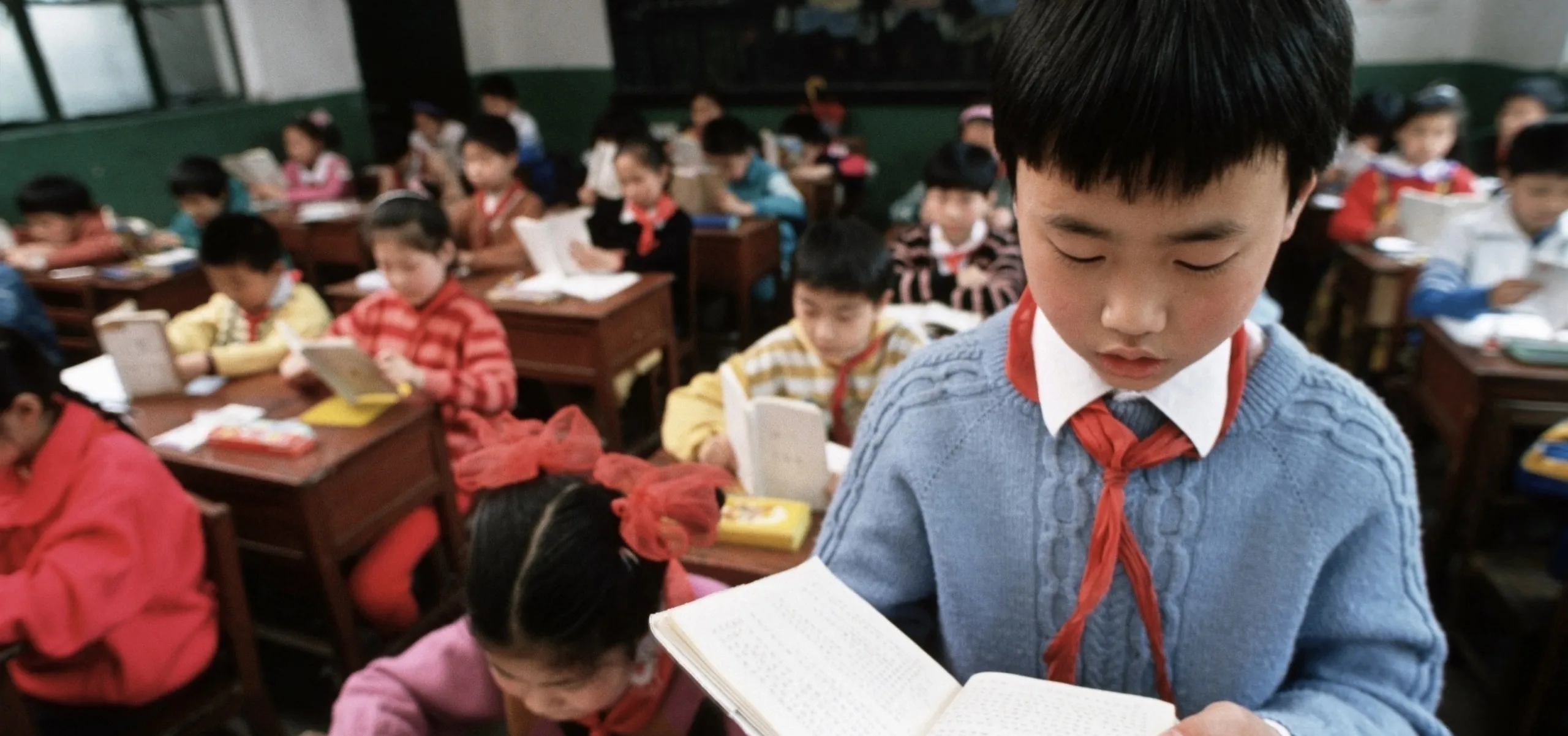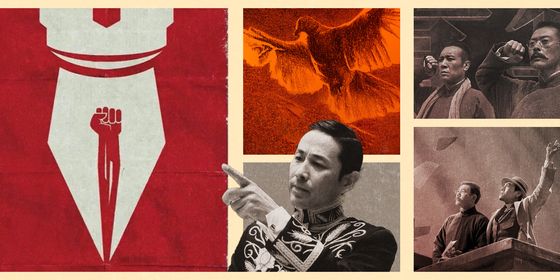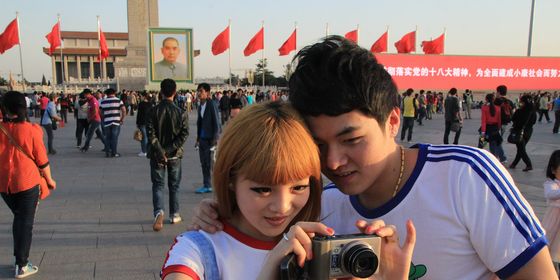The story of how Chinese punctuation evolved from the Han dynasty to today
While the schoolchildren of China today may gripe about having to learn the intricacies of commas and quotation marks, even they would probably admit that punctuation is a necessary, even essential, part of the written language.
But the current system of punctuation is actually a modern invention that only emerged in the 20th century, when Chinese reformers began adopting Western writing norms. Prior to that, China had its own sparse system of punctuation, but before the Song dynasty (960 – 1279), most writing in Chinese used no punctuation at all.
In ancient times, the concept of punctuation was known as “句读 (jùdòu),” with 句 meaning “sentence end,” and 读 meaning “pause.” But unlike today, where writers insert punctuation marks into their text to make it decipherable to the reader, there were no such symbols in ancient times—rather, judou referred to the ability of the reader to discern for themselves where pauses and sentence breaks went in the text.
Ancient Chinese texts were simply walls of characters without any punctuation marks, so mastering the art of judou could take years of study. As the Three Character Classic (《三字经》), a classic text widely believed to have been written in the Song dynasty and used for child education, puts it: “All the tutors who teach children should explain every character clearly and thoroughly, and teach them to spot breaks and pauses in sentences.”
Chinese began creating their own punctuation systems at least one thousand years ago. Zhang Xuecheng (章学诚), a scholar living in the Qing dynasty (1616 – 1911), wrote in his research notes Bingchen Zhaji (《丙辰札记》): “There were methods of punctuation before the Han dynasty (206 BCE – 220 CE).” In the Song dynasty, the Zengxiu Huzhu Libu Yunlue (《增修互注礼部韵略》), a traditional dictionary of rhymes used in composing poetry (韵书), instructed readers to “add a dot beside a character to denote a full stop, and a small dot between characters to indicate a pause.” But none of these marks were printed in the text: instead, it was the scholar who added their own punctuation as they read.
Classical Chinese also used specific characters to indicate the beginning and end of sentences. Characters like “夫,” “维,” “且,” and “盖” were often added to the beginning of a sentence. Meanwhile, “兮,” “也,” and “矣” indicated a pause or end of a sentence. For example, a line from Sun Tzu’s Art of War (《孙子兵法》), written during the Spring and Autumn Period (770 – 476 BCE), goes: “夫将者,国之辅也 (Fū jiàng zhě, guó zhī fǔ yě, Military generals are assistants of the emperor).” The 夫 and 也 characters have no meaning, but indicate the beginning and end of the sentence.
Western-style punctuation marks first came to China via Zhang Deyi (张德彝), a scholar who was sent on a tour of Europe by the Qing court. In his published travel journal Diary of a Journey to Europe and America (《《欧美环游记》 ), which he completed in 1869, Zhang explained punctuation marks like periods, commas, and semicolons. But Zhang was unconvinced of the need for such an elaborate system in Chinese, and dubbed it “too fussy” to be worth appropriating.
Yet by 1919 six eminent professors from Peking University, including famous scholar and language reformist Hu Shi (胡适) and writer Zhou Zuoren (周作人, brother of the writer Lu Xun), proposed introducing the “modern” punctuation marks of the West into Chinese. The same year, The Commercial Press published Hu’s Outline of the History of Chinese Philosophy (《中国哲学史大纲》), the first Chinese book printed with modern punctuation.
In 1920, with the help of scholars Chen Duxiu (陈独秀, who would go on to co-found the Communist Party of China in 1921), Hu Shi, and other reformers, a small publishing house in Shanghai published a new version of classic 14th century Chinese novel Outlaws of the Marsh (《水浒传》) with Western punctuation marks. The move made the classic text instantly more accessible to a much larger segment of the population.
The push for the use of Western punctuation was part of what became known as the New Culture Movement, which emerged after the May Fourth protests against imperialism and the perceived backwardness of China in 1919. Hu and fellow pioneers of the movement rejected the use of classical Chinese as it represented “outdated” and “backward” Chinese tradition, and instead promoted vernacular Chinese (白话文 báihuàwén).
But there was significant debate. Though the government announced that it would roll out modern punctuation in 1920, many believed this was a betrayal of traditional Chinese cultural roots. Lin Shu (林纾), an influential translator at the time opposed the move, claiming he would rather write “This sentence is incomplete (此语未完)” than use ellipses.
In 1927, the Ministry of Education forbade the use of modern punctuation marks in an exam for prospective employees, drawing criticism from scholars. Among them was Lu Xun (鲁迅), who wrote in 1932 that: “Over a decade ago, simply promoting modern punctuation marks made a group of people react as if their parents had died, and they hated the idea so much they wished to see it destroyed.”
By the 1930s, however, the reformers had prevailed, and the punctuation system was being used throughout the country. Since then, most published versions of classical as well as modern texts have included modern punctuation.
Today, most punctuation marks used in Chinese work the same as in English and other languages. But there are some notable exceptions. For example, there are the title marks 《》, or 书名号 (shūmínghào), used for the titles of books and films. These marks emerged in the 1950s and appear to have been an import from Russian, reflecting the large number of people learning the language of the Soviet Union at the time. Before that, people often drew a wavy line under the titles of books and movies, but this was difficult to typeset for publishers, so the title marks took over.
Meanwhile the apostrophe, hyphen, and backslash remain absent from Chinese, and periods are larger and unfilled (。) compared to periods used in the Latin alphabet. And although Lin Shu didn’t get his wish to eradicate ellipses from Chinese writing, perhaps he can feel partially vindicated in that this particular mark has taken on a distinctive Chinese form, written with six dots instead of three: ……













